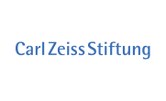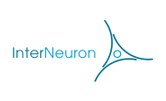Peter Jonas: How connectivity rules and synaptic properties shape the efficacy of pattern separation in the entorhinal cortex–dentate gyrus–CA3 network
| When |
Apr 12, 2022
from 05:15 PM to 06:00 PM |
|---|---|
| Where | Zoom-Vortrag! Die Zugangsdaten erhalten Sie mit der e-Mail-Einladung oder auf Anfrage bei Fiona Siegfried. |
| Contact Name | Fiona Siegfried |
| Add event to calendar |
|
Abstract
Pattern separation is a fundamental brain computation that converts small differences in input patterns into large differences in output patterns. Several synaptic mechanisms of pattern separation have been proposed, including code expansion, inhibition and plasticity; however, which of these mechanisms play a role in the entorhinal cortex (EC)–dentate gyrus (DG)–CA3 circuit, a classical pattern separation circuit, remains unclear.
Here we show that a biologically realistic, full-scale EC–DG–CA3 circuit model, including granule cells (GCs) and parvalbumin-positive inhibitory interneurons (PV+-INs) in the DG, is an efficient pattern separator. Both external gamma-modulated inhibition and internal lateral inhibition mediated by PV+-INs substantially contributed to pattern separation. Both local connectivity and fast signaling at GC–PV+-IN synapses were important for maximum effectiveness.
Similarly, mossy fiber synapses with conditional detonator properties contributed to pattern separation. By contrast, perforant path synapses with Hebbian synaptic plasticity and direct EC–CA3 connection shifted the network towards pattern completion. Our results demonstrate that the specific properties of cells and synapses optimize higher-order computations in biological networks and might be useful to improve the deep learning capabilities of technical networks






